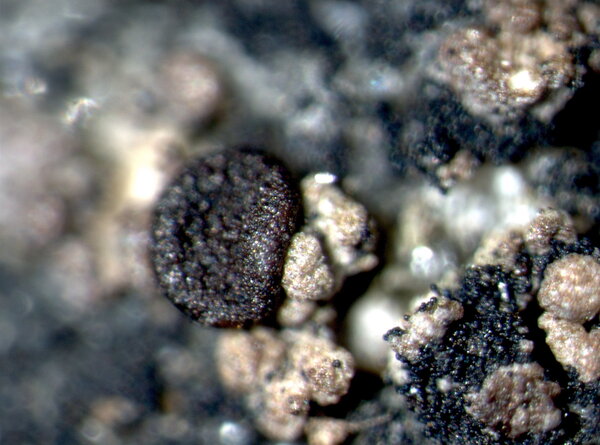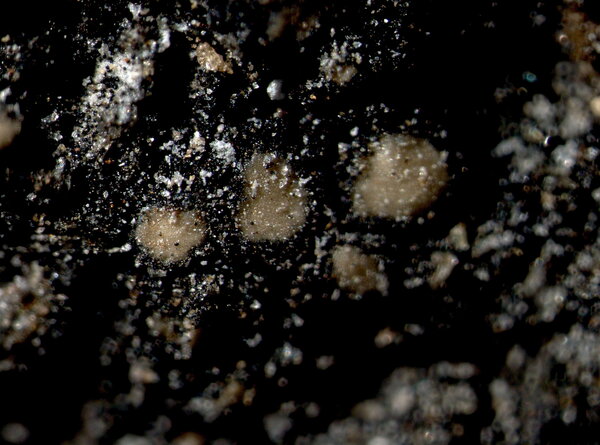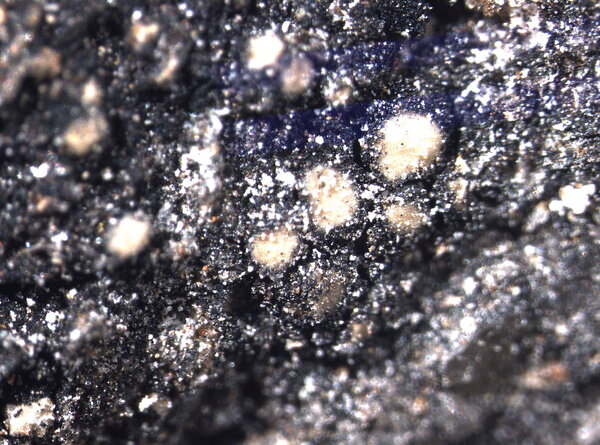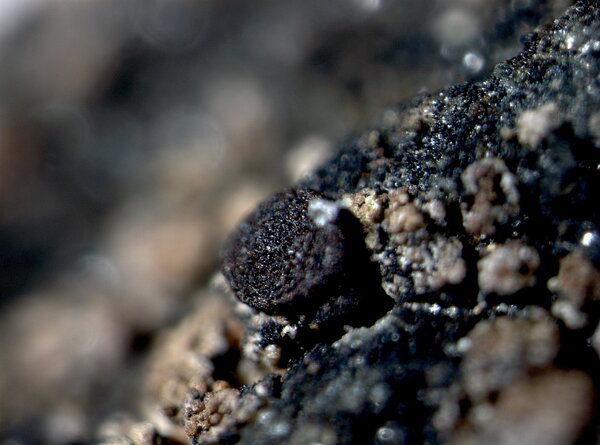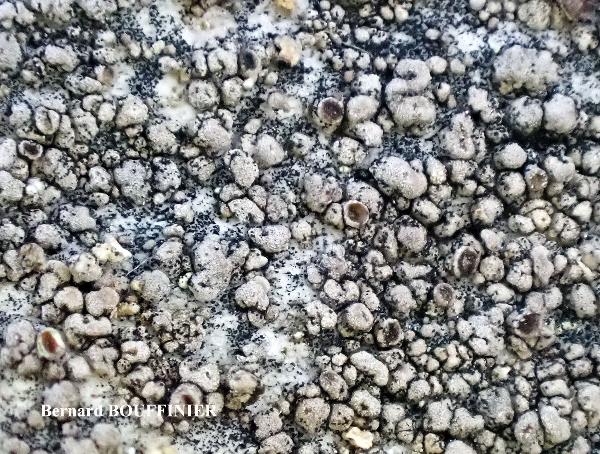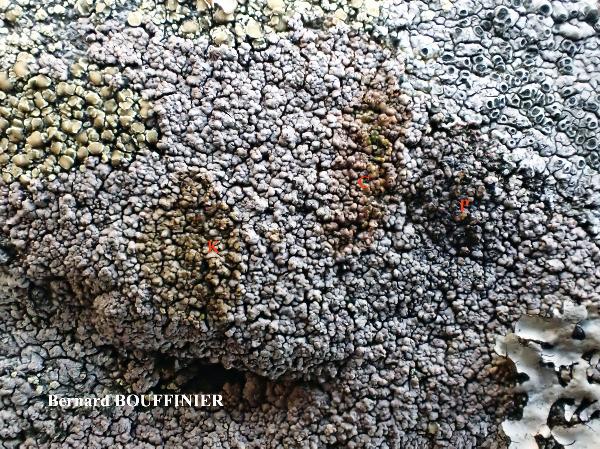Trapelia obtegens (Th. Fr.) Hertel
Ber. dtsch. bot. Ges., n. F., 4: 181, 1970. Basionym: Biatora coarctata subsp. obtegens Th. Fr. - Bot. Not.: 152, 1867.
Synonyms: Biatora coarctata var. obtegens (Th. Fr.) Stein; Lecidea coarctata var. obtegens (Th. Fr.) Th. Fr.; Lecidea obtegens (Th. Fr.) Vain.
Distribution: N - Frl (Tretiach & Hafellner 2000).
Description: Thallus crustose, episubstratic, areolate, pale brownish grey to dull grey-brown, rarely green-grey, pruinose, usually poorly evident, consisting of small, up to 0.3(-0.5) mm wide, often scattered, usually strongly convex, more or less round or sublobate areoles; soralia abundant to absent, early bursting from the areoles, excavate to slightly convex, 0.2-0.4 mm across, pale green to ochraceous. Cortex c. 10 μm thick, with a brown pigment and a thin epinecral layer. Apothecia lecideine, frequent also in sorediate morphs, 0.2-0.7 mm across, with a pinkish brown to red-brown, rough disc, a distinct, somewhat paler proper margin, and often, especially when young, a thin, often incomplete pseudothalline rim. Proper exciple of colourless hyphae embedded in a colourless to weakly pigmented gel; epithecium almost colourless to pale yellowish brown; hymenium colourless; paraphyses coherent, thin, densely branched and anastomosing, not thickened at apex; hypothecium colourless. Asci 8-spored, cylindrical-clavate, unitunicate, thin-walled, the apical dome K/I-, or weakly K/I+ blue, Trapelia-type. Ascospores 1-celled, hyaline, ellipsoid, 11-23 x 8-12 μm, thin-walled, with a perispore. Photobiont chlorococcoid. Spot tests: thallus and soredia K-, C-+ red, KC+ red, P-, UV+ whitish. Chemistry: gyrophoric acid (major), 5-O-methylhiascic acid (trace).Note: on siliceous pebbles near the ground, sometimes on roofing tiles and over thin soil layers over siliceous substrata. The records from Latium reported by Nimis (1993: 711), and probably that by Bartoli (1997b), were due to misidentifications, and are not accepted here.
Growth form: Crustose
Substrata: rocks
Photobiont: green algae other than Trentepohlia
Reproductive strategy: mainly asexual, by soredia, or soredia-like structures (e.g. blastidia)
Commonnes-rarity: (info)
Alpine belt: absent
Subalpine belt: rare
Oromediterranean belt: absent
Montane belt: rare
Submediterranean belt: absent
Padanian area: absent
Humid submediterranean belt: absent
Humid mediterranean belt: absent
Dry mediterranean belt: absent

Predictive model
Herbarium samples
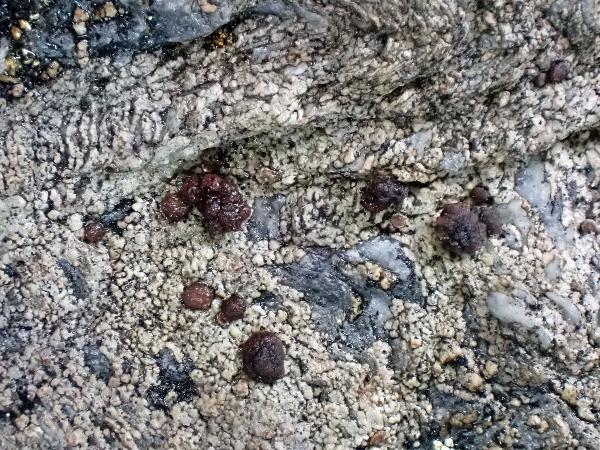
Bernard Bouffinier - Source: http://www.lichensmaritimes.org/index.php?task=fiche&lichen=606&lang=en
France, Hanvec
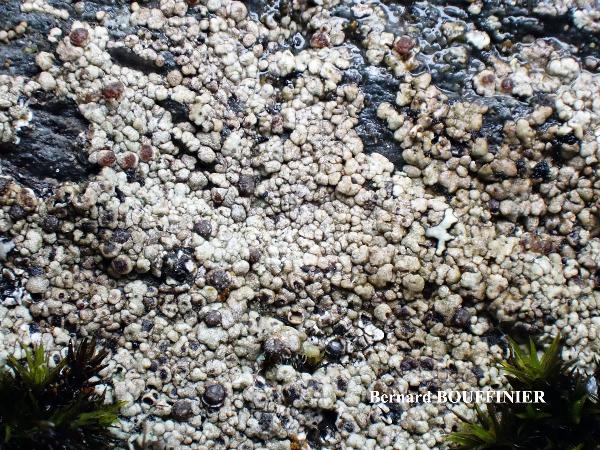
Bernard Bouffinier - Source: http://www.lichensmaritimes.org/index.php?task=fiche&lichen=606&lang=en
France, Hanvec
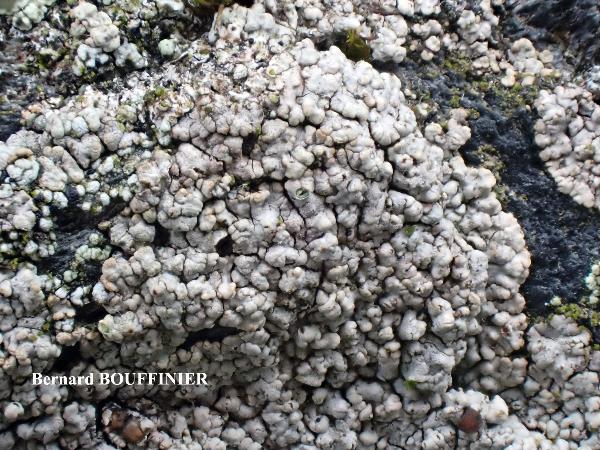
Bernard Bouffinier - Source: http://www.lichensmaritimes.org/index.php?task=fiche&lichen=606&lang=en
France, Hanvec
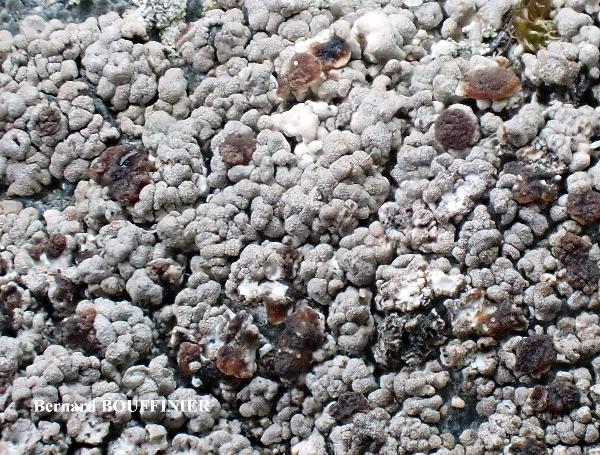
Bernard Bouffinier - Source: http://www.lichensmaritimes.org/index.php?task=fiche&lichen=606&lang=en
France, Hanvec
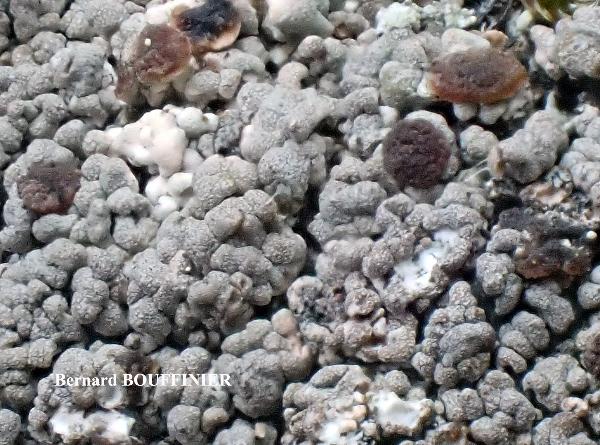
Bernard Bouffinier - Source: http://www.lichensmaritimes.org/index.php?task=fiche&lichen=606&lang=en
France, Hanvec
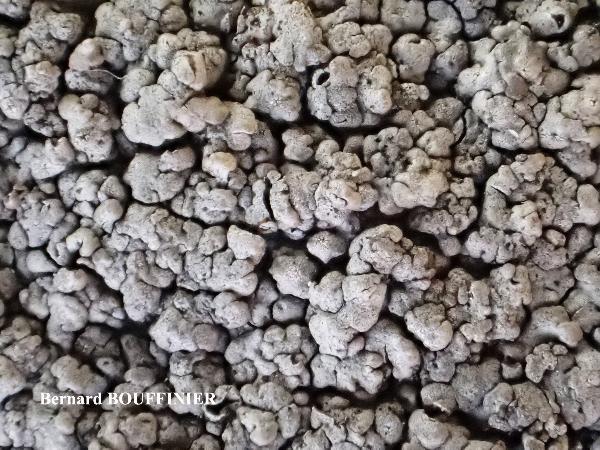
Bernard Bouffinier - Source: http://www.lichensmaritimes.org/index.php?task=fiche&lichen=606&lang=en
France, Hanvec
Growth form: Crustose
Substrata: rocks
Photobiont: green algae other than Trentepohlia
Reproductive strategy: mainly asexual, by soredia, or soredia-like structures (e.g. blastidia)
Commonnes-rarity: (info)
Alpine belt: absent
Subalpine belt: rare
Oromediterranean belt: absent
Montane belt: rare
Submediterranean belt: absent
Padanian area: absent
Humid submediterranean belt: absent
Humid mediterranean belt: absent
Dry mediterranean belt: absent

Predictive model
| Herbarium samples |

Bernard Bouffinier - Source: http://www.lichensmaritimes.org/index.php?task=fiche&lichen=606&lang=en
France, Hanvec

Bernard Bouffinier - Source: http://www.lichensmaritimes.org/index.php?task=fiche&lichen=606&lang=en
France, Hanvec

Bernard Bouffinier - Source: http://www.lichensmaritimes.org/index.php?task=fiche&lichen=606&lang=en
France, Hanvec

Bernard Bouffinier - Source: http://www.lichensmaritimes.org/index.php?task=fiche&lichen=606&lang=en
France, Hanvec

Bernard Bouffinier - Source: http://www.lichensmaritimes.org/index.php?task=fiche&lichen=606&lang=en
France, Hanvec

 Index Fungorum
Index Fungorum
 GBIF
GBIF
